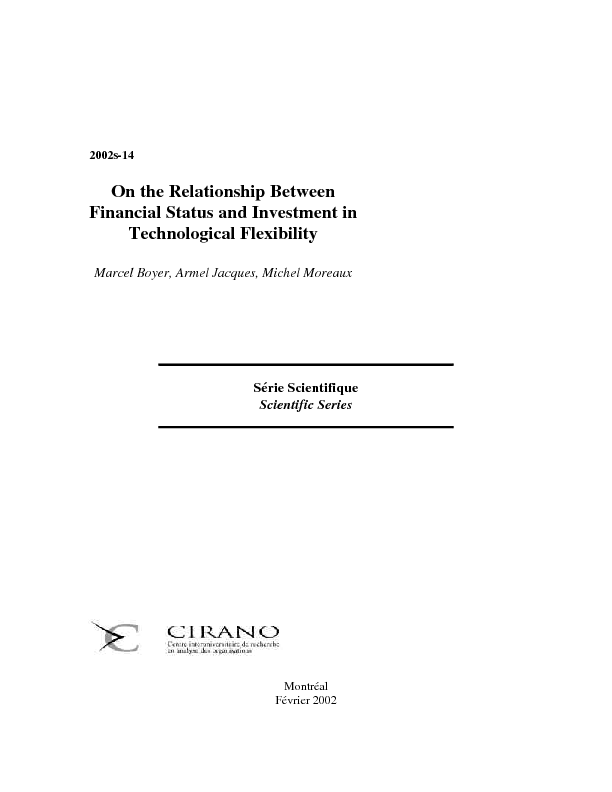On the Relationship Between Financial Status and Investment in Technological Flexibility
We study the interactions between equity financing and strategic technological flexibility choices of firms facing a threat of costly bankruptcy. We show that a firm's level of financial hardship is an important determinant of the level and type of investment it chooses to make, either a less costly inflexible technology or a more expansive flexible technology. We show that the level of financial hardship has a non-monotonic effect : as the level of equity financing increases, the choice of technology may change and the level of investment may first increase and then decrease or vice-versa, depending on the differential investment cost, the bankruptcy cost, and whether or not the less costly technology is the best reply for an all equity (no debt) firm. The level of external financing (debt) may be used strategically as a non-cooperative collusion way to increase the expected profits of both firms. A firm may also use debt as a commitment device to increase its own expected profit.
[ - ]




